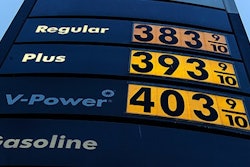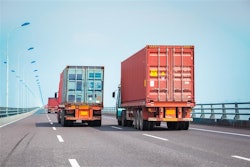
The challenges hurting trucking companies today are the same ones that have been around for years. The driver shortage, the increase in consumer buying behavior and the return of on-time/in-full (OTIF) penalties has led to a very competitive environment for trucks to move freight. With bottlenecks at key pickup and delivery points costing companies valuable time and money, companies can’t afford a band-aid fix that hasn’t worked. Add in an equipment shortage and other Coronavirus disease (COVID-19) safety hurdles, and it’s easy to see why there is such tight capacity in the market.
One area that the trucking industry has turned to over the years as a potential solution is trailer pools. Trailer pools are a way to facilitate drop-and-hook operations as opposed to live loading and unloading. The shipper can load or unload trailers on their schedules while the carrier can drop an empty trailer and pick up a full one at a shipper or receiver's facility, or even a nearby lot, without waiting around. The goal is to improve loading and unloading operations at facilities while also reducing truck driver dwell and detention times.
Many companies have tried to employ such drop-and-hook tactics over the last few years. However, they have encountered different operational and safety challenges that have resulted, only adding new challenges to the supply chain. But what if there was a way to better manage trailer pool operations that would result in a win-win-win scenario for shippers, carriers and receivers? That’s what technology could bring to the supply chain.
Common trailer pool mismanagement
Outdated technologies of today’s current shipping standards are causing bottlenecks in the supply chain at critical points such as coordinating pickup and delivery appointments, getting drivers in and out of facilities due to paperwork and truck driver idling caused by delays in the facility, among other root causes.
It’s also known that the trucking industry faces a driver shortage, but now the hurdle has shifted from people to equipment. For trailer pools to work effectively, businesses need an excess of equipment on hand to have trailers pre-loaded and ready for pickup when drivers drop off their current load, and then they also need tractors or other specialized equipment in the yard to move those dropped trailers to a dock for unloading.
An additional change in dock operations comes in the form of having to manage a drop lot rather than a trailer being pulled right up to the dock for unloading. Drop lots can create visibility and tracking problems as well as introduce new safety hazards when trailers are dropped haphazardly. Something as simple as signage for parking spots can be a problem if it’s not done correctly. Add these things together within a facility’s yard, and companies can be stuck looking for suitable equipment or implementing safety precautions.
For shippers and receivers, an added hurdle might involve working with a variety of carriers who use different technologies and have different operations for how they manage their equipment. Getting everyone on the same page is a significant challenge.
What is a realistic solution?
Imagine, a shipper can utilize a technology solution to optimize loads by maximizing the space used on a trailer and routing the truck to be more efficient with deliveries; then, the truck driver can arrive at a facility, check in within a few minutes, drop their load in a geofenced area, complete paperwork, get a new load and be out of the facility in a quarter of the time it normally takes all while using the same technology; and finally, workers at the receiver facility can find that dropped trailer, unload it whenever they’re ready and finish any necessary paperwork while using the same technology as the shipper and the carrier – completing the delivery cycle.
That's all possible with technology that exists today. It can connect shippers, carriers and receivers on the same platform, increasing collaboration and visibility across all those involved in managing a trailer pool. It also enables them to effectively plan shipment arrivals, minimize delays, make adjustments on fly, ensure equipment is in the right place at the right time and more accurately forecast trailer needs.
With technology, companies can automate the management of trailer pools, from scheduling, routing and tracking. This will drastically reduce wait times, unload times and detention fees while increasing the number of truckloads that can be moved from a facility. By increasing throughput at facilities, shippers can boost profits by getting products to customers quicker and carriers are happy because they’re able to spend more time on the road making money and less time in offices filling out paperwork. Receivers can also plan ahead for when loads arrive, dedicate staff and resources to unload trailers and be ready for the next task, boosting efficiency. It’s a win-win-win for everyone.
Why it matters
Trailer pool technology connects shippers, carriers and receivers to enable visibility of what is happening with the trailer pool in real time at each of the facilities. Trailer pool technology has also shown that it increases truck driver productivity by reducing dwell time. Drivers are getting in and out of facilities within 20 minutes, sometimes as short as 11 minutes. For shippers and receivers, it provides visibility on the current state of the yard, the state of the trailer and the number of loaded/empty trailers, which helps with rebalancing trailers so that shippers always have empties to load.
When shippers and receivers can create more operational efficiencies, it means that they can move more of their products and boost profits. At the same time, when operations improve so much that carriers can reduce dwell times, cut down on OTIF fees and boost productivity by spending more time on the road moving freight, they can make more money. This is just one example of how effective technology in the supply chain can improve working conditions for all parties. But it will take more examples like this and everyone pushing in the same direction for improved operations to truly reduce the challenges facing the trucking and transportation industry.


















